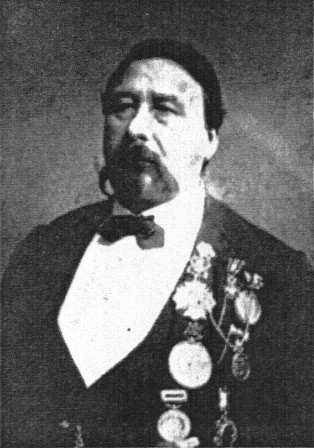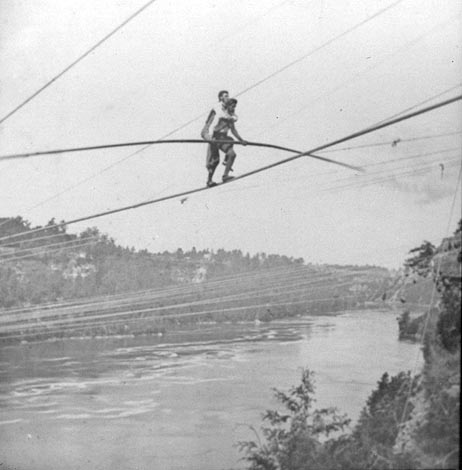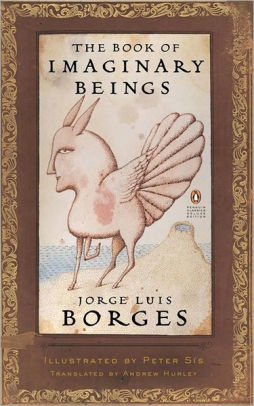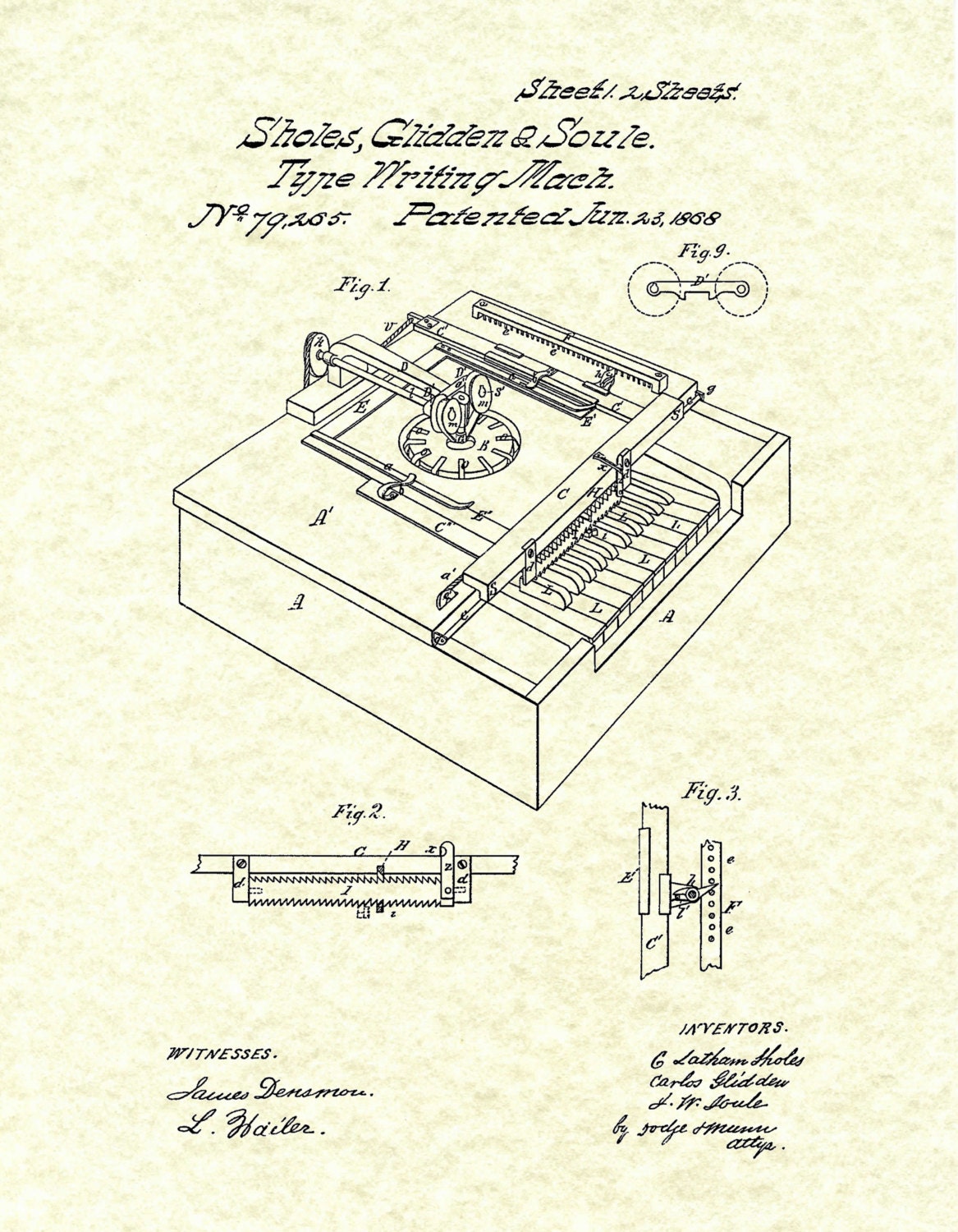All page reference refer to the Scribner’s Paperback Fiction edition of Flight to Canada, published by Simon and Schuster in 1998.
| Page | Term | Description |
| 1 | “Naughty Harriet” | (infanitlizing/patronizing/tradition of belittling female writers by using female names) |
| 3 | Poem “Flight to Canada” | To see the annotations for the poem “Flight to Canada,” go to the “Flight to Canada” poem page. |
| 7 | The black in my hair is running away | This is a somewhat ambiguous statement. It could potentially mean that everything dark within the narrator is retreating and his life is starting to improve; however, it could also symbolize that the narrator is getting older and his hair is turning grey. |
| 7 | Lincoln | Abraham Lincoln was the 16th President of the United States, from 1861-1865. He also delivered the Emancipation Proclamation, which changed the legal status of over 3 million slaves and allowed them to fight in the Civil War. |
| 7 | Harriet Beecher Stowe | Harriet Beecher Stowe was an Abolitionist and an author. Her most famous work was Uncle Tom’s Cabin (1852). Sentimental and realistic by turns, the novel explored the cruelties of chattel slavery in the Upper and Lower South and exposed the moral ironies in the legal, religious, and social arguments of white apologists.
http://www.history.com/topics/harriet-beecher-stowe
Photo from: https://en.wikipedia.org/wiki/Harriet_Beecher_Stowe |
| 7 | Douglass | a reference to Frederick Douglass, another famous Abolitionist and author who wrote Narrative of the Life of Frederick Douglass
http://www.history.com/topics/black-history/frederick-douglass |
| 7 | Jeff Davis | casual way of referring to Jefferson Davis, who was the Confederate President from 1861-1865 http://www.history.com/topics/american-civil-war/jefferson-davis |
| 7 | Lee | Lee- reference to Robert E. Lee: who was the leader of the Confederate Army during the Civil War http://www.history.com/topics/american-civil-war/robert-e-lee |
| 7 | 40’s | Reference to the “40 Acres and a Mule” promised to newly freed slaves; could also be referencing 40 oz. containers of alcohol |
| 7 | Stray Leechfield | Stray Leechfield- the pornographic model in the story |
| 7 | Robin and Judy | Robin is Raven Quicksill’s uncle, also referred to as “an Uncle Tom of a different name”. Judy is Robin’s wife, and Raven’s aunt. |
| 7 | Princess Quaw Quaw Tralaralara | Princess Quaw Quaw Tralaralara- no reference found, meaning she must be a satirical character based on Native American princesses. |
| 7 | Mammy Barracuda | 
http://www.mar1sportfishing.com/Barracuda.html Other than the large boney, scary looking fish in the sea, the Merriam Webster Dictionary definition for Barracuda is “:one that uses aggressive, selfish, and sometimes unethical methods to obtain a goal especially in business.” This applies to Mammy Barracuda because she is strong and aggressive as a character, often using cruelty to keep others in line is her goal. Her fierceness brings Mammy her power. Ms. Swille obeys Mammy Barracuda, giving her more control. “Mammy Barracuda uses both sides of her personality to retain control over the household” Harris, Trudier. Saints, Sinners, Saviors: Strong Black Women in African American Literature. Palgrave, 2002 |
| 7 | Cato the Graffado/Giffado | (see Magill—a later entry) |
| 7 | Yankee Jack | Yankee Jack is the husband of Princess Quaw Quaw. He is also the epitome of the coming capitalist system that will be forced to expand in the wake of the collapse of the slave labor policy in the South: he is a pirate
Sexton, Timothy. “Flight to Canada Characters.” GradeSaver: Getting You the Grade, www.gradesaver.com/flight-to-canada/study-guide/character-list.
|
| 7 | Pompey |
Pompey is Uncle Robin’s secretary and was formerly Swille’s butler. There is a chapter about Pompey later in the book.
|
| 7 | Bangalang | (Relation to topsy)Bangalang is the name of a west African trading port.
Kuhne, Dave. African Settings in Contemporary American Novels. Greenwood Press, 2006. “Mammy barracuda threatens bangalang on one occasion” assuming she is threatening this as a punishment bangalang is inferred to mean a type of blow or harsh punishment. Harris, Trudier. Saints, Sinners, Saviors: Strong Black Women in African American Literature. Palgrave, 2002. Bang-Shang-A-Lang is a song written by the Archies in 1968 Bang- to strike hard with a loud blow,” an imitative formation, or else from a Scandinavian source akin to Old Norse banga “to pound, hammer” also of echoic origin. Slang meaning “have sexual intercourse with” www.etymonline.com/word/bang.
|
| 7 | “So you’re the little woman who started the big war” | “When President Lincoln met Stowe, he said to her, “So you’re the little woman who wrote the book that made this Great War?” Harriet Beecher Stowe’s Uncle Tom’s Cabin portrayed some of the most powerful arguments against slavery, and immediately became America’s first international bestseller. “Uncle Tom’s Cabin” would go on to become the bestselling novel of the 19th century. Before writing her novel, she interviewed many people who were former slaves and even some who were still fugitives traveling aboard the Underground Railroad. Stowe used Henson’s memoirs, published in 1849, as reference for her antislavery novel. Henson’s dramatic experiences and his connection with Stowe’s book made him one of the most famous Canadians of his day. “Uncle Tom’s Cabin” was the most powerful antislavery novel and had a lasting effect on attitudes toward African-Americans and slavery. After reading “Uncle Tom’s Cabin” many people became convinced of the evils of slavery. Stowe’s “Uncle Tom’s Cabin” sold 300,000 copies in the United States alone in the first year that it was published. Many people thought at the time, and believe still today that publication of Stowe’s novel led directly to the Civil War.”
“Ontario.” U-Haul: SuperGraphics: Ontario – The Little Lady Who Started the Big War, www.uhaul.com/SuperGraphics/175/8/Enhanced/Venture-Across-America-and-Canada-Modern/Ontario/The-Little-Lady-Who-Started-the-Big-War. |
| 7 | “Received Harriet Beecher Stowe at the White House” | In 1862, records say that Harriet Beecher Stowe visited the White House after being formally invited by Lincoln. The records further explain their first encounter:
“He seems to have received her gravely; after all he had been harassed by many evangels.”4 Her son and grandson recalled: “Mrs. Stowe, in telling of her interview with Mr. Lincoln…dwelt particularly on the rustic pleasantry with which that great man received her. She was introduced into a cosy room where the President had been seated before an open fire, for the day was damp and chilly. It was Mr. Seward who introduced her, and Mr. Lincoln rose awkwardly from his chair, saying, ‘Why, Mrs. Stowe, right glad to see you!’” “Notable Visitors: Harriet Beecher Stowe (1811-1896).” Mr. Lincoln’s White House, www.mrlincolnswhitehouse.org/residents-visitors/notable-visitors/notable-visitors-harriet-beecher-stowe-1811-1896/. |
| 7 | “repay[ed] his courtesy by spreading the rumor that he was illiterate” | Lincoln was literate and read very well according to this source.
(He was a) “student of grammar, reader of Shakespeare and Robert Burns, spinner of stories, and soldier.”4 New Salem friend Mentor Graham noted that Mr. Lincoln was often solicited to write letters for his less literate friends. “Abraham Lincoln’s Personality.” Abraham Lincoln’s Classroom, The Lehrman Institute, 2017, Those who disagreed with his viewpoints attacked him in many ways politically, probably by insulting his intelligence as it was a commonplace insult just as it is today. No evidence as proof she specifically said he was illiterate. There is a scholarly article claiming he is literate however. “Abraham Lincoln’s Personality.” Abraham Lincoln’s Classroom, www.abrahamlincolnsclassroom.org/abraham-lincoln-in-depth/abraham-lincolns-personality/.
|
| 7 | “They were always spreading rumors about Lincoln.” | As proved by the rumors saying that Lincoln was illiterate, him and his son were drunks, and that he was a womanizer, yes people spread a lot of rumors about Lincoln. |
| 7 | “That he and his son Todd were drunks.” | “Robert’s relationship with his father was more formal”“Robert was a disciplined, hard-working man; he was strong, confident and self-aware; he was intelligent, witty, kind, gentlemanly, proper, and generous. Yet he was also impatient: with laziness, with ignorance, with lies and deception, with dishonorable and selfish people; and, once offended, he knew how to hold a grudge, like many of his mother’s family.”
Although this quote does not say he was a drunk, he may have had tendencies toward alcohol that were exaggerated by his enemies. “Family: Robert Todd Lincoln (1843-1926).” Mr. Lincoln’s White House, The Lehrman Institute, www.mrlincolnswhitehouse.org/residents-visitors/family/family-robert-todd-lincoln-1843-1926/. |
| 7 | “That Mrs Lincoln was mad.” | “His mother’s spending habits led him to have her confined to an insane asylum in 1875.”“One memorable four-month period saw her collect about 400 pairs of gloves.”
“Even during the period in 1862 and 1863 when Mrs. Lincoln was in mourning for her son Willie and wore only black, she managed to go further into debt for new clothes.” “the mental strain upon her was great, betrayed by extreme nervousness approaching hysteria, causing misapprehensions, extreme sensitiveness as to slights, or want of politeness or consideration.” Indeed, Mary todd Lincoln was dubbed “insane” in her day. Her long depression after the death of her son Willie and extreme spending habits had her sent to the insane asylum. “Family: Robert Todd Lincoln (1843-1926).” Mr. Lincoln’s White House, The Lehrman Institute, www.mrlincolnswhitehouse.org/residents-visitors/family/family-robert-todd-lincoln-1843-1926/. |
| 7 | “That he was a womanizer.” | “Before marrying Todd, Lincoln was involved with other potential matches. Around 1837, he purportedly met and became romantically involved with Anne Rutledge. Before they had a chance to be engaged, a wave of typhoid fever came over New Salem and Anne died at age 22. Her death was said to have left Lincoln severely depressed. However, several historians disagree on the extent of Lincoln’s relationship with Rutledge and his level of sorrow at her death may be more the makings of legend. About a year after the death of Rutledge, Lincoln courted Mary Owens. The two saw each other for a few months and marriage was considered. But in time, Lincoln called off the match.”
“Abraham Lincoln.” Biography.com, A&E Networks Television, 11 Aug. 2017, www.biography.com/people/abraham-lincoln-9382540#!
Although Lincoln did date two other girls before marraige, I would not credit that to be an official reason for him being a real “womanizer.” If anything, this next article claims he had more inappropriate interactions with men than woman. “Abe Lincoln was married to Mary Todd from 1842 until his death in 1865. It is claimed that one of the reasons he called off their initial engagement was the melancholy that resulted from Joshua Speed departing Springfield. Speed and Lincoln had lived together and slept together in the same bed for four years after they met in Illinois in 1837. Moreover, Lincoln’s bodyguard (no pun intended) and “companion” from 1862 to 1863, David Derickson, slept with him in Mary’s bed when she took overnight trips out of town.” Coard, Michael. “Cheating Has Nothing to Do With Cain or Gingrich’s Ability to Be President | The Philly Post.” Philadelphia Magazine, 13 Dec. 2011, www.phillymag.com/news/2011/12/13/honey-presidents-cheat-wives/ |
| 7 | “That his mother Nancy Hanks was a slut.” | – On June 12, 1806, Hanks married Thomas Lincoln, her sister was an illegitimate child but there is no result of her being unfaithful to her husband
|
| 7 | “The Confederates said that he was a ‘nigger.'” | The significance of this quote is the rumors that Abraham Lincoln was of African descent. According to accounts, it is believed that Abraham is of African descent due to the heritage of his mother, Nancy Hanks. |
| 7 | Who is to say what is fact and what is fiction? | – fiction in which the author self-consciously alludes to the artificiality or literariness of a work by parodying or departing from novelistic conventions (especially naturalism) anƒd traditional narrative techniques. |
| 8 | “accusing Lord Byron of pornography” | It seems to be just a claim that Harriet Beecher Stowe assumed Lord Byron to be involved in pornography, but there is no evidence.
In the September, 1869, issue of the Atlantic Monthly, Harriet Beecher Stowe published an article in which she claimed that Lord Byron, the poet, had committed incest with his half-sister. These charges had been made before and are generally accepted by Byron biographers today, but the publication of such a claim in a respectable literary journal in 1869 touched an exposed nerve of American consciousness. For weeks, Harriet Stowe was attacked in newspapers throughout the country as a liar and a fool who had sought money and notoriety by pandering to obscene and depraved tastes. The article was termed “startling in accusation, barren in proof, inaccurate in dates, infelicitous in style.” The author’s literary reputation plummeted, and the Atlantic Monthly lost more than a third of its subscribers in a single year. The moral sensibilities of thousands of Americans had been outraged; this violation of a taboo unleashed resentments, which had apparently been smoldering since the end of the Civil War, against Stowe, the Beecher family, and the liberal causes with which both were identified.
|
| 8 | “She liked Nobility.” | The nobility is assuming that Harriet Beecher Stowe wanted to keep her social class intact. Avoiding unnecessary interactions with unfavorable individuals would allow Harriet to keep her acknowledged privileges and social status. According to the quote and context, Harriet likes the status she has and the advantages that come with those privileges. |
| 8 | “She popularized the American novel and introduced it to Europe.” | In Great Britain and other European countries, Uncle Tom’s Cabin was widely read—by poor farmers and the working middle class, by wealthy landowners and nobility. The easy accessibility of Uncle Tom’s Cabin helped drive sales—and Stowe’s popularity—to unprecedented levels. The book inspired songs, ceramics, scarves, soap, and games. And there was theater. When Stowe landed in Liverpool, 10 versions of her book were on stage in London. |
| 8 | Uncle Tom’s Cabin | The novel’s plot starts with the Shelby family being pushed to sell two of their slaves because of economic troubles; Uncle Tom and Harry. Neither Mr. or Mrs. Shelby want to sell the slaves for different reasons. They are sold and the novel then follows their journey and the characters they meet.
The novel has been taught in colleges around the world. Book groups discuss it and every library has the book on its shelf. These days there is more literary discussion about the broad stereotypes the novel is accredited for starting and popularizing. |
| 8 | “The story she ‘borrowed’ from Josiah Henson.” | Supposedly, Harriet Beecher Stowe met Reverend Josiah Henson, author of his own autobiography, while visiting her brother in Boston. While she was speaking with him, Henson recounted the story of how he witnessed his father being beaten for defending his mother by their master, and how he was later sold away from his family. This encounter would later lead to Stowe having a vision of Uncle Tom’s death scene while in a church, after which she returned home, locked her door, and wrote it down on grocery bag paper, since that was all she had at the time.
This information was gather from an online post, made by someone who had researched the story of the publication of Uncle Tom’s Cabin. The link can be found here. |
| 8 | “Harriet only wanted enough money for a silk dress.” | When Stowe published her book through John Jewett of Boston, she agreed to take only 10% of the profit from the book. Supposedly, Stowe mainly wrote to support her husbands meager income, supposedly feeling frustrated that she needed to. According to a source, she did not think the book would sell well, and was quoted saying that she hoped the book would sell enough so, “I may buy a silk dress”. The book went on to become one of the first American best sellers, not being truly beaten until gone with the wind in 1936. |
| 8 | The Life of Josiah Henson, Formerly a Slave | Josiah Henson was a former slave from Charles County, Maryland, born in 1789. For most of his life, Josiah lived as a slave, until in 1830, when he escaped with his family to Canada, after learning his master planned to sell him away from them. For the rest of his life, Josiah lived in Dresden, Ontario, Canada, becoming the leader of the Dawn Settlement, an settlement for escaped slaves. He would occasionally return to the U.S., to assist slaves along the Underground Railroad, as well as traveling there and to Britain to secure financial aid for his community. In 1849, Josiah Henson published an Autobiography called, “The Life of Josiah Henson, Formerly a Slave“. His story would later serve as the inspiration for Uncle Tom’s Cabin, much to his displeasure.
A link to a summary of his life on Britannica can be found here. A link to a digital copy of Josiah’s entire book can be found here. |
| 8 | gris-gris | According to multiple sources on the internet and google’s own definition, a gris-gris is an amulet or charm. This amulet or charm is related to Voodoo rituals, and according to one source, is meant to be a form of talisman to ward off evil spirits or protect the wearer. Supposedly in the past, such items were dolls, but in recent times, it is usually a small bag with herbs in it. They are supposedly of African or Caribbean origin, and the word may come from the french word joujou, which meant doll or plaything. |
| 8 | Etheric Double | Etheric Double is the same as etheric body. Etheric Double refers to subtle energy body, aura, or field that interpenetrates the physical body. This sort of aura is invisible ordinary sight, but visible to clairvoyant vision. Etheric Double includes seven main vortexes or energy known as chakras. The seven centers in the etheric double work through, among other things, the human endocrine system, the heart, and the brain. They are part of the bridge between spiritual, psychic (mind and emotions), and physical body.
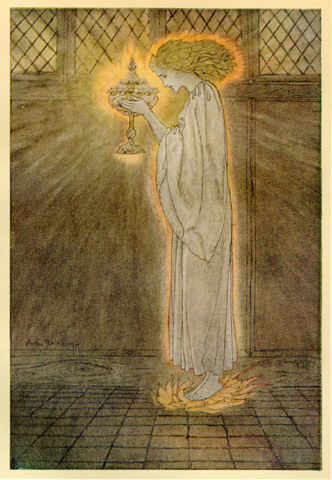 The Holy Grail, illustration by Arthur Rackham, 1917. Pre-Raphaelite art at this time often represented contemporary interest in the “spirit body”, “aura” or “body of light”. Picture From Wikipedia |
| 8 | “Josiah Henson went away and fell in love with wood. . . . His walnut boards.” | He did have wooden boards that he would take on exhibit to different places. He would do this a few times.
Henson, Josiah, et al. Uncle Tom’s Story of His Life: an Autobiography of the Rev. Josiah Henson (Mrs. Harriet Beecher Stowe’s “Uncle Tom”), from 1789-1876. General Books, 2010. |
| 8 | “He took his walnut boards to England and exhibited them at the Crystal Place.” | “I decided to go to England, carry with me some of the best specimens of black walnut-boards our farm would produce and exhibit them in the world’s great Industrial Exhibition,”
Henson, Josiah, et al. Uncle Tom’s Story of His Life: an Autobiography of the Rev. Josiah Henson (Mrs. Harriet Beecher Stowe’s “Uncle Tom”), from 1789-1876. General Books, 2010. The Crystal Palace is a “giant glass-and-iron exhibition hall in Hyde Park, London, that housed the Great Exhibition of 1851.” It was rebuilt at Sydenham Hill. It was destroyed in a fire in 1936 and only the towers survived but those were demolished due to the conspicuous nature of them in 1941 when the Germans were bombing England. 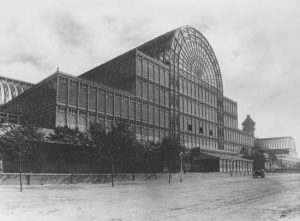 BBC Hulton Picture Library 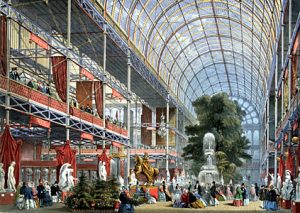 The transept of the Crystal Palace, designed by Sir Joseph Paxton, at the Great Exhibition of 1852, Hyde Park, London. Hulton Archive/Getty Images The Editors of Encyclopædia Britannica. “Crystal Palace.” Encyclopædia Britannica, Encyclopædia Britannica, Inc., 1 May 2017, www.britannica.com/topic/Crystal-Palace-building-London.
|
| 8 | “Met the young Queen Victoria.” | “He, the runaway slave, has lived to be entertained by Queen Victoria in her own royal castle.”
Henson, Josiah, et al. Uncle Tom’s Story of His Life: an Autobiography of the Rev. Josiah Henson (Mrs. Harriet Beecher Stowe’s “Uncle Tom”), from 1789-1876. General Books, 2010. |
| 8 | “. . . Dawn. His settlement in Canada.” | He was able to establish a settlement called Dawn once he escaped from Slavery with the help of anti-slavery workers. The settlement was meant to be a means of catching up since slavery deprived people of learning the skills they needed to be self-sufficient.
“Dresden /The Dawn Settlement.” Black History Canada, Historica Canada, www.blackhistorycanada.ca/topic.php?id=123&themeid=2.
Currently the Township of Dawn has been combined with that of Euphemia to form Dawn-Euphemia. It’s a very small city. The last recorded population is 2049. “About the Township.” Welcome to The Township of Dawn-Euphemia, www.dawneuphemia.ca/Pages/Dawn-Euphemia.aspx.
|
| 8 | “The Key to Uncle Tom’s Cabin” | The book was written to defend Stowe against the claim that Uncle Tom’s Cabin was false or at least exaggerated. The book is centered around the defense that it is based on real events and at the same time it more aggressively attacked the South than the book itself did. Uncle Tom’s Cabin was more sympathetic but this book is sharper and angrier. It is not very readable like Uncle Tom’s Cabin and although it claims to be about the sources for the events in Uncle Tom’s Cabin, Stowe read many of the sources after the novel came out.
Railton, Stephen. “The Key to Uncle Tom’s Cabin.” Uncle Tom’s Cabin & American Culture: A Multimedia Archive, National Endowment for the Humanities, utc.iath.virginia.edu/uncletom/key/kyhp.html.
|
| 8 | “Josiah would never have thought of waging a plot-toting suit against her.” | Uncle Tom’s Cabin came in 1852, and The Life of Josiah Henson came out in 1849. That was only 3 years and depending on how much Uncle Tom’s Cabin changed the work, Henson would have had a case against her but due to his race he wouldn’t have been able to take any action against her depending on what state they were in. Fair Use is the law that says she has to change it or comment on the story and the length of time available to Henson at the time would have been 28 years.
“Copyright Timeline: A History of Copyright in the United States.” Association of Research Libraries, Association of Research Libraries, www.arl.org/focus-areas/copyright-ip/2486-copyright-timeline#18C.
|
| 8 | “When I see those two men in The New York Times in a booth in a fancy restaurant . . . discussing the money they’re going to make from th musical version of Uncle Tom’s Cabin . . .” |
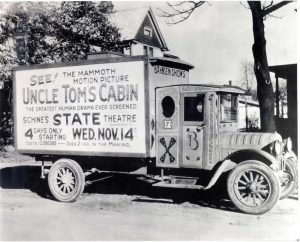 In the 19th century, “Tom Show” troupes criss-crossed the country staging versions of “Uncle Tom’s Cabin.” Later, film companies adapted the book to the silver screen. Tom Shows were the theatrical productions of Uncle Tom‘s Cabin. More than 400 separate companies traveled and performed some theatrical version of the story. They were very popular at the end of the 19th century and the beginning of the 20th. I don’t think they were necessarily musicals but there were theater productions. Ford, Jane. “The Story of ‘Uncle Tom’s Cabin’ Spread from Novel to Theater and Screen.”UVA Today, 12 Nov. 2012, news.virginia.edu/content/story-uncle-tom-s-cabin-spread-novel-theater-and-screen.
|
| 9 | Creole Candy | Classic Sweets shop crafting house made local treats like pralines plus chocolates & pecan candies. This specific candy is toffy like, sweet, and gooey candy.
“Leah.” Leah’s, Leah’s Pralines, 2014, www.leahspralines.com/CreoleCandies-s/3.htm.
|
| 9 | “when I see their agent in National Era swimming in the ocean with his chow dog” | The National Era was an abolitionist newspaper that ran from 1847 to 1860. Published weekly in Washington D.C., it contained seven columns and was four pages long. The National Era was noted for its large size and unique type.
Excertps from Uncle Tom’s Cabin were featured in this Newspaper Hochman, Barbara. “Uncle Tom’s Cabin in the National Era : An Essay in Generic Norms and the Contexts of Reading.” Book History, The Johns Hopkins University Press, 15 Oct. 2004, muse.jhu.edu/article/174086/summary.
|
| 9 | “spirits . . . touch him” | |
| 9 | “Harriet made enough money . . . to buy . . . a beautiful home.” | Currently it’s operated as a historical and cultural site focusing on Harriet Beecher Stowe, her friends, family, and colleagues. They do tours and rent out to groups for meetings and special events.
stowehousecincy.org. “Home.” Come Visit Our History, www.stowehousecincy.org/index.html.
|
| 9 | “Henson had to sell Dawn, his settlement to pay his creditors.” | |
| 9 | “They told Josiah Henson to behave with ‘gentlemanly dignity.'” | There are no sources that state who told Henson to behave with ‘gentlemanly dignity,’ but it was probably his master, Isaac Riley. Riley purchased Henson because of his strength and intelligence. Later, Riley appointed Henson as the superintendent of the farm and allowed him to become a preacher in the Methodist Episcopal Church.
“Josiah Henson.” Documenting the American South |
| 9 | Guede | “The Loa of the Dead. Also refers to a Group of Loa that associate with Guédé and are considered members of his family. He is a very wise man for his knowledge is an accumulation of the knowledge of all the deceased. He stands on the center of all the roads that lead to Guinee, the afterworld. Guédé is represented as an undertaker, dressed completely in black wearing dark glasses.”
New Orleans Voodoo Lowas “America’s Most Haunted City” |
| 9 | “got people to write parodies and minstrel shows about Harriet.” | After the Civil War, interesting in Uncle Tom’s Cabin fell drastically and its reputation became more for its historical value than any literary merit, and the Civil Rights activists accused it for perpetuating African American stereotypes. Still, contemporary critics marvel at the overwhelming popularity of Uncle Tom’s Cabin and theorize on why it was so successful, some argue that it was the book’s connection to the nineteenth century’s other favorite form ofentertainment: blackface minstrelsy. Throughout the antebellum era, white performers would transform themselves into grotesque parodies of African Americans with burnt cork and ragged clothing. Nobody living in America during the time could avoid minstrelsy’s influence, and many contemporary black stereotypes first became popularized on the minstrel stage.
https://libres.uncg.edu/ir/asu/f/Freed,%20Ephraim_2014_Thesis.pdf |
| 9 | “Black money. . . . The money stained her hands.” | We were unable to find any sources about Stowe obtaining money illegally. Uncle Tom’s Cabin was where she made all of her money.
“According to Henry Louis Gate Jr.’s introduction to the annotated edition of Uncle Tom’s Cabin, The National Era paid Stowe $300 for 43 chapters. Before the serial’s completion, Stowe signed a contract with John P. Jewett and Co. to publish a two-volume bound book edition, and that’s when it really took off. Released on March 20, 1852, the book sold 10,000 copies in the U.S. in its first week and 300,000 in the first year. In the U.K., 1.5 million copies flew off the shelves in the first year. Stowe was paid 10 cents for each one sold. According to a London Times article published six months after the book’s release, she had already amassed $10,000 in royalties.” “10 Things You May Not Know About Harriet Beecher Stowe.” Mental Floss
|
| 9 | “the cartoon showed Harriet leaving her dirty stains all over Byron’s immaculate and idealized white statue.” | We were unable to find a cartoon of Harriet Beecher Stowe and Byron’s statue, but here is a picture of Lord Byron’s statue now located in Athens. |
| 9 | “his home . . . is called ‘Uncle Tom’s Museum'” | Josiah Henson Park is the former plantation property where Reverend Josiah Henson was enslaved. This park is a historic resource of local, state, national and international significance because of its association with Reverend Henson, whose 1849 autobiography, The Life of Josiah Henson, Formerly a Slave, Now an Inhabitant of Canada inspired Harriet Beecher Stowe’s landmark novel, Uncle Tom’s Cabin.
https://www.montgomeryparks.org/parks-and-trails/josiah-henson-park/ |
| 9 | “the power the Brazilians say he has” | From 1876 to 1888, the book held a very high profile in Brazil. There were mainly theatrical adaptations, performed by companies that toured many of the country’s cities. The height of Uncle Tom‘s success in Brazil coincided with the growing abolitionist movement in the country, at a time when the work’s influence tended to wane in the Northern hemisphere.
http://humanas.blog.scielo.org/en/2017/05/30/readings-of-uncle-toms-cabin-in-slaveholding-brazil/ |
| 9 | know “roots” | This could possibly refer to the novel Roots: The Saga of an American Family which was a novel written by Alex Haley released in 1976. The book is about an 18th-century African, captured as an adolescent and sold into slavery in the United States, and follows his life and the lives of his alleged descendants in the U.S. down to Haley, this is why it is called Roots.Roots galvanized the nation and created an extraordinary political, racial, social and cultural dialogue that hadn’t been seen since the publication of Uncle Tom’s Cabin. |
| 9 | Umbanda | Umbanda is a religion of Brazil that combines influences of indigenous Brazilian religion, African religions, Catholicism, and Spiritism. Many followers of Umbanda call themselves Catholic.
“Umbanda.” ReligionFacts |
| 9 | Pretos Velhos | “Old Blacks” who are the spirits of Africans enslaved in Brazil, generally slaves from Bahia. They are characterized as humble, patient, long-suffering, and good.
“Preto Velho: Resistance, Redemption, and Engendered Representations of Slavery in a Brazilian Possession-Trance Religion.” American Ethnologist
|
| 9 | Pai Tomas | A Cabana do Pai Tomás is a Brazilian telenovela. It is based on Harriet Beecher Stowe’s Uncle Tom’s Cabin. It is the “story of good-hearted slave Pai Tomás and his wife Cloé, being successively sold to cruel masters, having as backdrop the conflicts between landowners and slaves in the American South, during the Civil War.”
“A Cabana do Pai Tomás.” IMBd |
| 10 | “one biography entitled a chapter dealing with the scandal ‘Catastrophe.'” | Information concerning a scandal relating to Harriet Jacobs and a biographer reserving a chapter called “Catastrophe” could not be found. |
| 10 | HooDoo | |
| 10 | “I was an instrument of the Lord” | |
| 10 | old mummy grip | |
| 10 | “Harriet said that Byron was fucking his sister.” | In the September, 1869, issue of the Atlantic Monthly, Harriet Beecher Stowe published an article in which she claimed that Lord Byron, the poet, had committed incest with his half-sister. These charges had been made before and are generally accepted by Byron biographers today, but the publication of such a claim in a respectable literary journal in 1869 touched an exposed nerve of American consciousness. For weeks, Harriet Stowe was attacked in newspapers throughout the country as a liar and a fool who had sought money and notoriety by pandering to obscene and depraved tastes. The article was termed “startling in accusation, barren in proof, inaccurate in dates, infelicitous in style.” The author’s literary reputation plummeted, and the Atlantic Monthly lost more than a third of its subscribers in a single year. The moral sensibilities of thousands of Americans had been outraged; this violation of a taboo unleashed resentments, which had apparently been smoldering since the end of the Civil War, against Stowe, the Beecher family, and the liberal causes with which both were affiliated.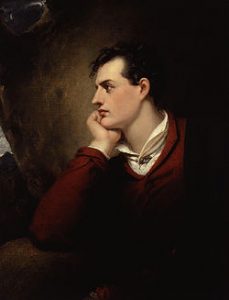 |
| 10 | Lady Byron | |
| 10 | Countess Guiccioli, the tramp of the Tuileries Gardens | |
| 10 | Augusta Leigh | accused of “sharing lustful embrace” |
| 10 | “brilliant seductive genius” | |
| 10 | her brother, Henry | (what was their relationship) |
| 10 | “Why isn’t Edgar Allan Poe recognized as the principal biographer of that strange war?” | |
| 10 | mumbo jumbo | The original meaning was “a god or a spirit said to have been worshipped by West African people.” Nowadays it means obscure or meaningless language. This is the title of a book written by Ishmael Reed as well.
“Mumbo Jumbo.” Merriam-Webster.com. Merriam-Webster, n.d. Web. 6 Dec. 2017. |
| 10 | “the fairest civilization the sun ever shown upon” | This is a phrase unique to Flight to Canada. It reflects the Planters’ perception of America as the privileged population and oppressor. |
| 10 | “Satan’s kingdom” | Another phrase unique to Flight to Canada. In contrast, this displays the view that the slave’s had of America, having experienced adversity and discrimination. |
| 10 | Tubman | Harriet Tubman escaped from slavery to Philadelphia in 1849. It is important to note that before she traveled, Philadelphia had the most free black people in the nation at the time. She made 19 trips to the South and brought over 300 slaves to freedom in just ten years. Before the Civil War, Tubman found a fresh start in Canada. During the Civil War, she took various jobs to aid the Union such as being a cook, a nurse, and even a spy. After the war she settled down, however, she went to woman’s suffrage movements and was interviewed by folks like Wilbur Siebert to give correct accounts of the history of the Underground Railroad.
“Harriet Tubman.” PBS, WETA. Web. Accessed 13 Dec. 2017. |
| 10 | Bibb | Henry Walton Bibb was born into slavery. He was married on the plantation where he was enslaved. He then escaped slavery by crossing a river over to Indiana, but then returned to save his wife. Bibb was then enslaved again, but escaped again the night his master died. Now that he was free, he decided to enroll in a school to get some formal education and became a black abolitionist. With the placement of the 1850 Fugative Slave Law he decides to set his roots in West Canada where him and his wife start an antislavery journal. He also was an avid lecturer of antislavery stories and firsthand experiences. He is a famous first generation African- American fugative from the south who is compared to others such as Frederick Douglass. (10).
Jackson, Gregory S. “Bibb, Henry Walton (1815-1854), author, editor, and antislavery lecturer.” American National Biography. 2000-02. Oxford University Press. Accessed 14 Dec. 2017 |
| 10 | “believing in omens, consulting conjure and carrying unseen amulets” | Amulets are necklaces worn to protect and are often times religiously affiliated. An omen is an event that is showing what is to come whether it be a good or a bad omen. “Conjuring” is calling upon a ghost in a magic ritual. These three references refer to belief in spirits and religion. By saying they are wearing amulets and believing in omens they are thought to believe heavily in things that the average person may not, Reed portrays them as faith and spirit based individuals. |
| 11 | “Lincoln, the American Christ, who died on Good Friday.” | Lincoln actually died on April 15th. However, he was shot on Good Friday in 1865 on April 14th. See the Lincoln Assassination in Chapter 15. |
| 11 | “Harriet saying that God wrote Uncle Tom’s Cabin.“ | The book is grounded in evangelical religion. The end of the book calls out to the church to reform and to end the sinful act of slavery. Therefore, Stowe may not have said God wrote Uncle Tom’s Cabin, but her Christian sentiments would have her imply that God played a role in the novel’s conception.
Hill, Patricia R. “Uncle Tom’s Cabin as a Religious Text.” University of Virginia. Accessed 13 Dec. 2017. |
| 11 | Raven Quickskill | The protagonist of the novel. “Raven” has become related to the color black, in reference to the species of bird. Furthermore, the raven was a figure in Native American mythology, especially those of the Tlingit people of Alaska. “Quicksill” resembles a Native American name. The “Quick” part of his name also reflects Quicksill’s quick wit and intelligence.
Andrews, William L., et al. The Concise Oxford Companion to African American Literature. Oxford University Press, 2001. |
| 11 | Ashanti Holy Land | The land of the Ashanti is in West Africa. The Ashanti region is specifically located in the middle belt of Ghana, most of region’s inhabitants are Ashanti people: one of Ghana’s major ethnic groups. Economically the Ashanti region is prosperous, which is perhaps the “holiness” Reed refers to.
“Ashanti.” Government of Ghana Official Portal, Government of Ghana. Accessed 14 Dec. 2017. |
| 11 | to lay hands on | To in any way harm the message of the story |
| 11 | “Princess Quaw Quaw has been arrested carrying a fifteen-foot balance pole, two American flags at each end, while walking on the steel cables of the Golden Gate Bridge.” | Construction of the Golden Gate Bridge began in 1933 and finished in 1937, many years after the Civil War and the end of slavery. In addition, there are no reports of people attempting to walk across the bridge, at least prior to the publication of Flight to Canada. As of 2017, there have been a number of people over the years who have made attempts to walk across the bridge. |
| 12 | Blondin | Charles Blondin was a French tightrope walker and acrobat who toured the United States during the mid-1800s.
Blondin was best known for walking across Niagara Falls in 1858, being the first person to ever do so. |
| 12 | “Why don’t they call him the male Quaw Quaw Tralaralara?” | Prior to this quote, the narrator referred to Quaw Quaw as the “female Blondin.” This may be humor on Reed’s part. |
| 12 | Trinidad, Majorca, and Sausalito | Trinidad is one of two islands that reside in the Southern Caribbean, the other island being the Tobago. It is the larger, more popular of the two islands.
Majorca is the largest island in the Balearic Islands, a series of islands that are apart of Spain and resides in the Mediterranean Sea. Sausalito is a city in Marin County, California.
|
| 12 | Eagle Hotel | There isn’t a known Eagle Hotel that was built in New York, but there was a hotel of the same name in Wilmington, Illinois. This Eagle Hotel, built in 1837, was a flourishing business during the 1850s until it was eventually closed in 1982. Shortly after, the Wilmington Area Historical Society purchased the building and converted it into a museum. |
| 12 | Goofus birds | A goofus bird is a mythological animal that is described as a bird that flies backwards and builds it nests upside down. This bird was apart the Book of Imaginary Beings (1957), a book written by Jorge Luis Borges and Margarita Guerrero that includes descriptions of over 120 mythical animals from various folklore and literature.
|
| 12 | “worshipping Bears, Turtles, Ravens, Coyotes, and Eagles” | Worshipping animals is a common feature of many cultures. Bears are a major symbol among Native American communities, what with it representing traits such as strength, guardianship, etc. Turtles carry their own meaning that varies based on each culture. For instance, in Hindu culture, the god Vishnu took the form of a turtle and carried the world on his back. For Native Americans, it’s believed that their homeland was created on the back of a giant turtle.
For ravens, the Tlingit people in Alaska deem the animal as its chief deity, a figure who brought life and fire to humanity. Coyotes are commonly founded in many indigenous cultures in North America, usually depicted as an anthropomorphic male coyote who was the creator of all things. Lastly, Eagles are significant in Native American cultures, some legends seeing the eagle as a messenger between man and their deity. |
| 12 | “object of reverence” | An object of reverence is an inanimate object that is associated with a deity in a religion. This object, often called an idol, is often seen as a link between man and the deity. An example is the Great Buddha statue in Bahd Gaya, India. |
| 12 | “only Ghosts Hate New Things” | This phrase means that ghosts hate anything associated with the future. Since ghosts are inherently stuck in the past due to being dead, they would hate anything that is new or unlike anything they seen in their time. |
| 12 | Steamers | According to this website that contains a list of all steam boats that sailed Lake Erie by 1835, the earliest known steam boat that sailed the lake was the Walk-In-The-Water, built in 1818.
|
| 12 | typewriter | The first recorded machine later to be known as a typewriter was built in 1808 by Italian inventor Pellegrino Turri as a gift for a blind friend.
The first successful line of commercial type writers were invented by Christopher Sholes, Carlos Glidden and Samuel Soule from Milwaukee, Wisconsin in 1868. |
| 13 | Fog Woman | |
| 13 | “Evil Dogs us” | |
| 13 | Ganooks | |
| 13 | “Abe the Player” | |
| 13 | “You put witchery on the word” | |
| 13 | Jewett and Company | |
| 13 | Frederick Douglass House | |
| 14 | “Dixie” | |
| 14 | “’Abe Lincoln’s last card or Rouge et Noir’ was the caption under the wood engraving in Punch magazine” | Punch was an influencial British weekly magazine of political satire that was published from 1841-2002. Punch was famous for its humorous illustrations.
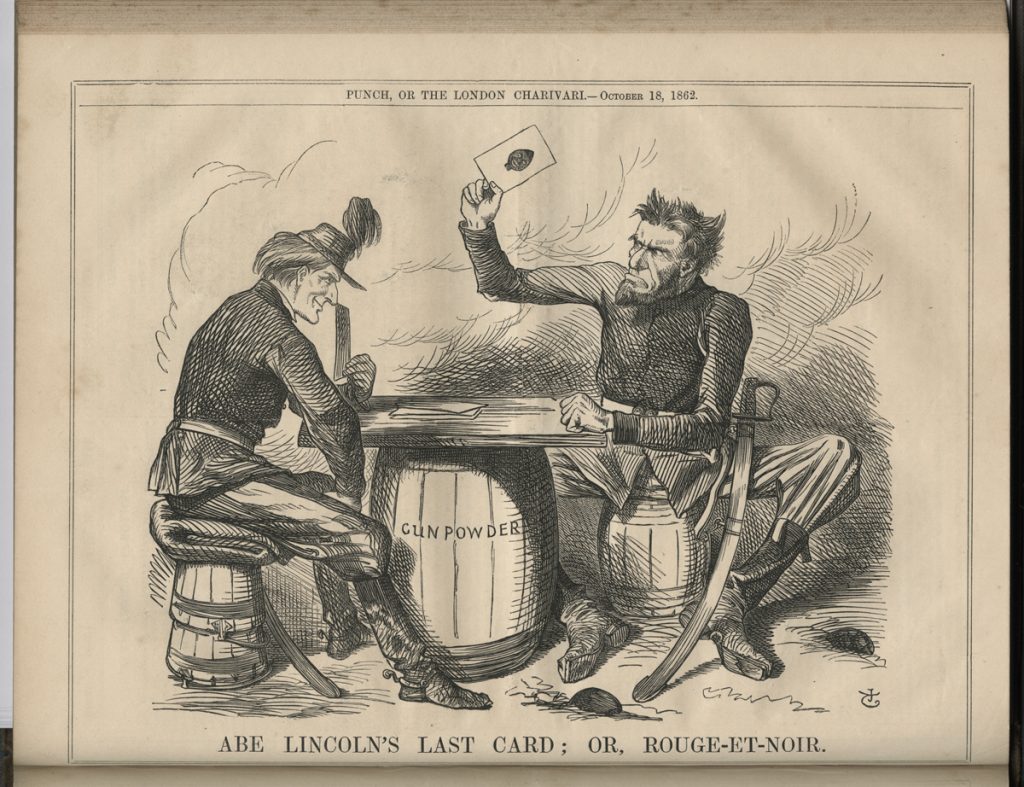 Image source: Six Months of Britain’s Punch Magazine, with Numerous Engravings Showing Lincoln’s Frustration at the War’s Progress This cartoon was published on October 18, 1862. The Emancipation Proclamation, was issued by executive order of President Abraham Lincoln on January 1, 1863. According to Rufus Rockwell Wilson, in Lincoln in Caricature: A Historical Collection with Descriptive and Biographical Commentaries: “The cartoon, Abe Lincoln’s Last Card; or, Rouge et Noir, contributed by Tenniel to the October 18, 1862., issue of London Punch again shows how an important element in England, blind to the real trend and meaning of events, saw in Mr. Lincoln’s prayerfully meditated Emancipation Proclamation only the gesture of a wily but desperate gambler driven to a last resource. It was accompanied by the following lines in which Mr. Lincoln is represented by their author as giving expression to his real thought and purpose: Brag’s our game; and awful losers We’ve been on the Red. Awfully we’ve bled. But we have lost it still, Down to Sharpsburg Hill. When luck’s desperate, desperate venture Still may bring it back : Here I lead THE BLACK! Pay in fire and gore: Worse off than before. From the Slaves of Southern rebels Thus I strike the chain: Still shall slaves remain. They to wop are masters; Here are our shin-plasters! (New York : Horizon Press, 1953. p. 188) |
| 14 | Sir John Tenniel | |
| 14 | “Master Hugh, the band of Frederick Douglass, said, ‘If you give a nigger an inch, he’ll take and ell. If you teach him how to read, he’ll want to know how to write. And this accomplished, he’ll be running away with himself.’” | |

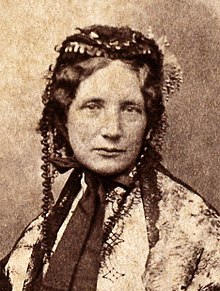
 ƒ
ƒ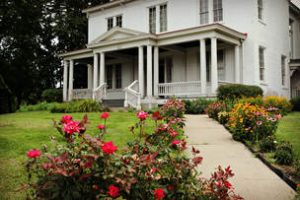
 Statue
Statue
